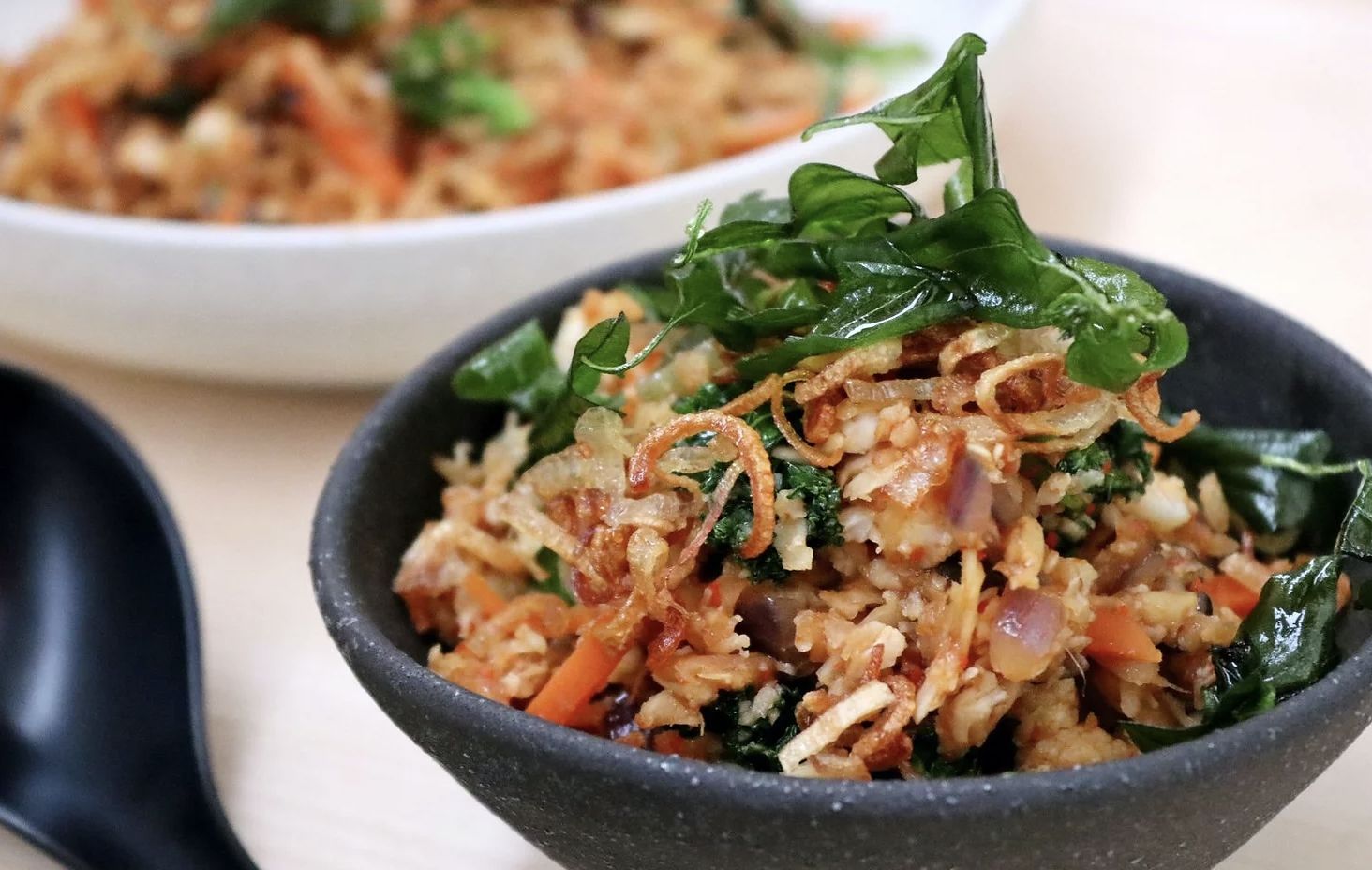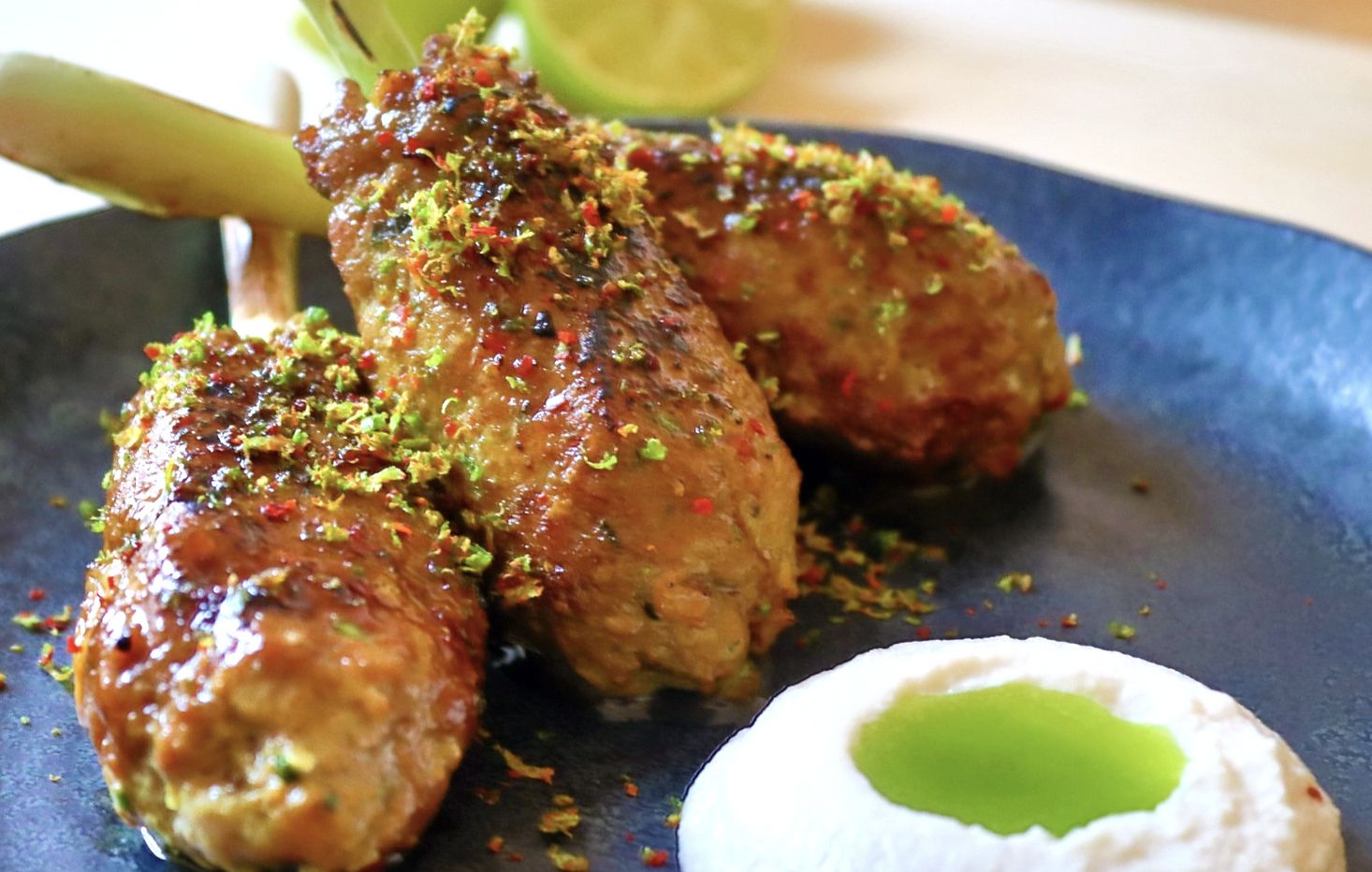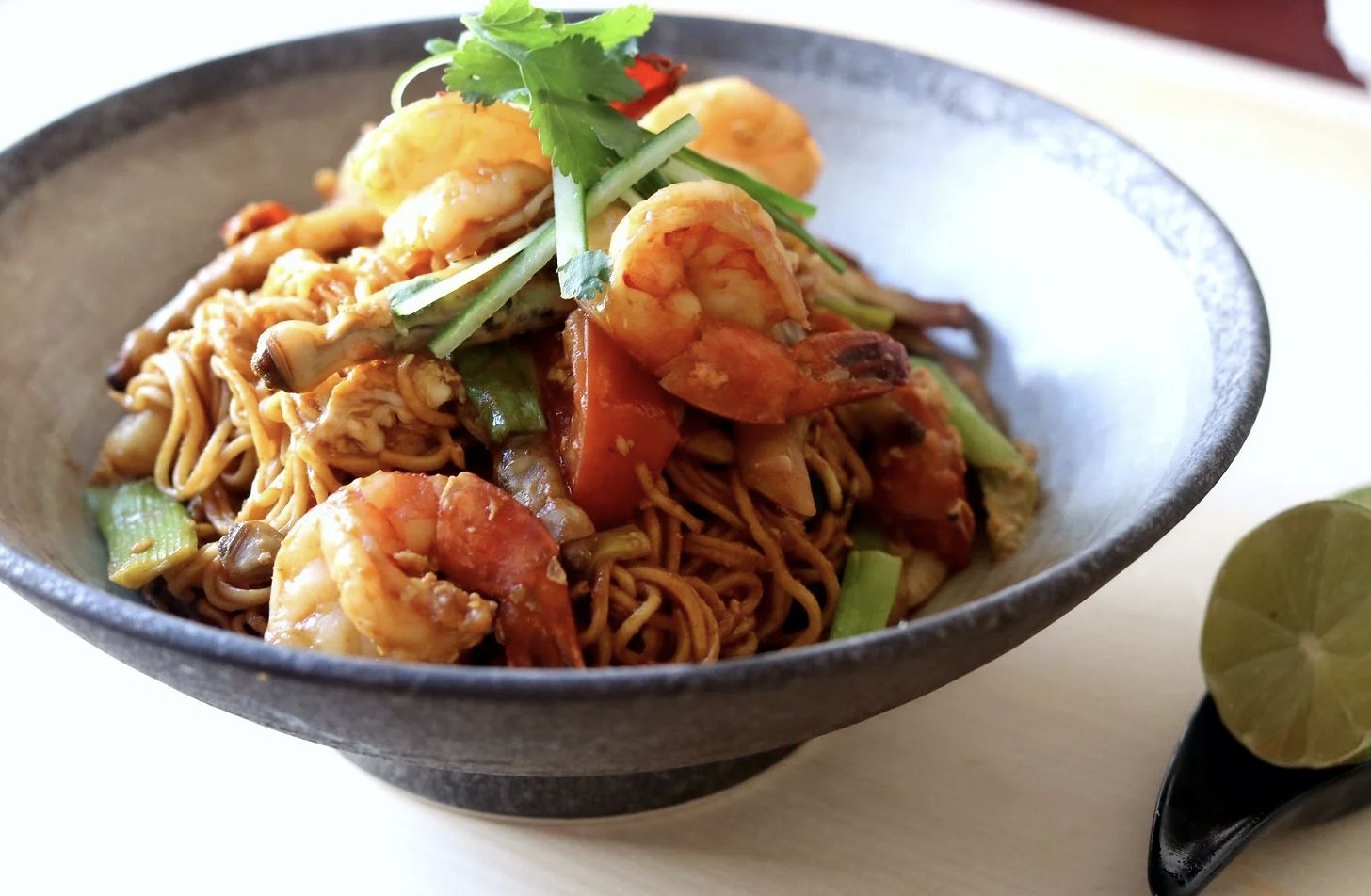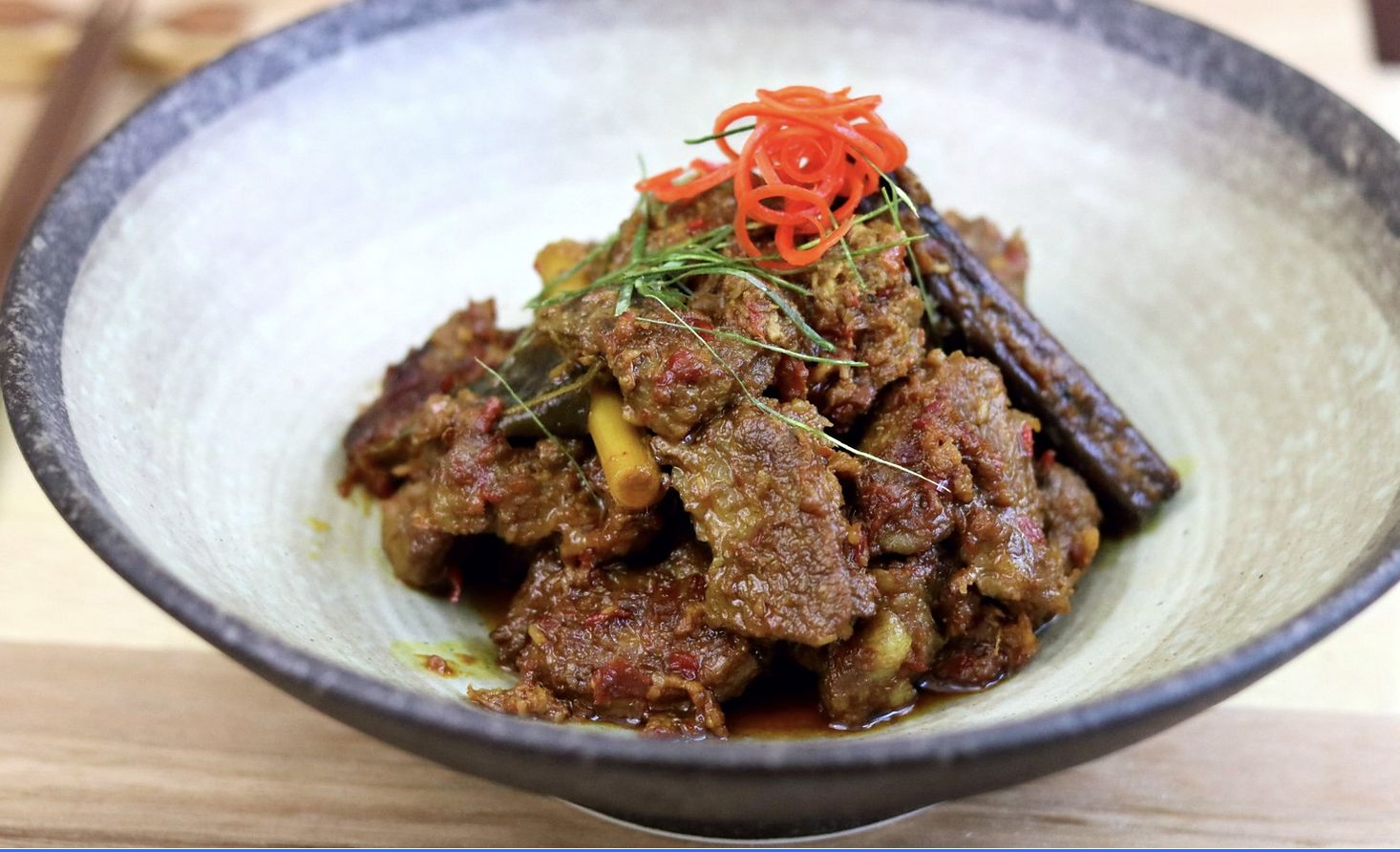
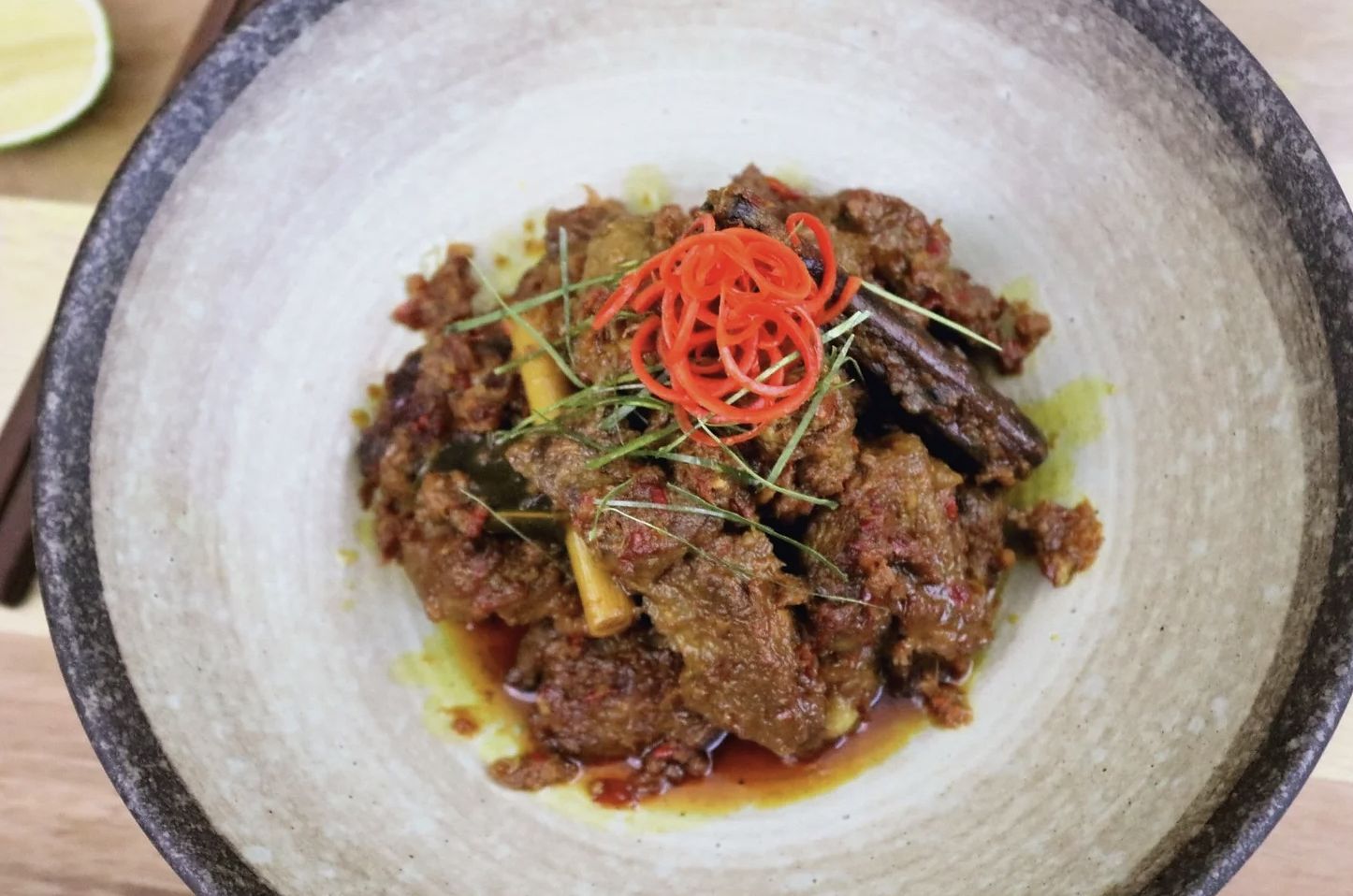
Intro:
Method:
Curry paste:
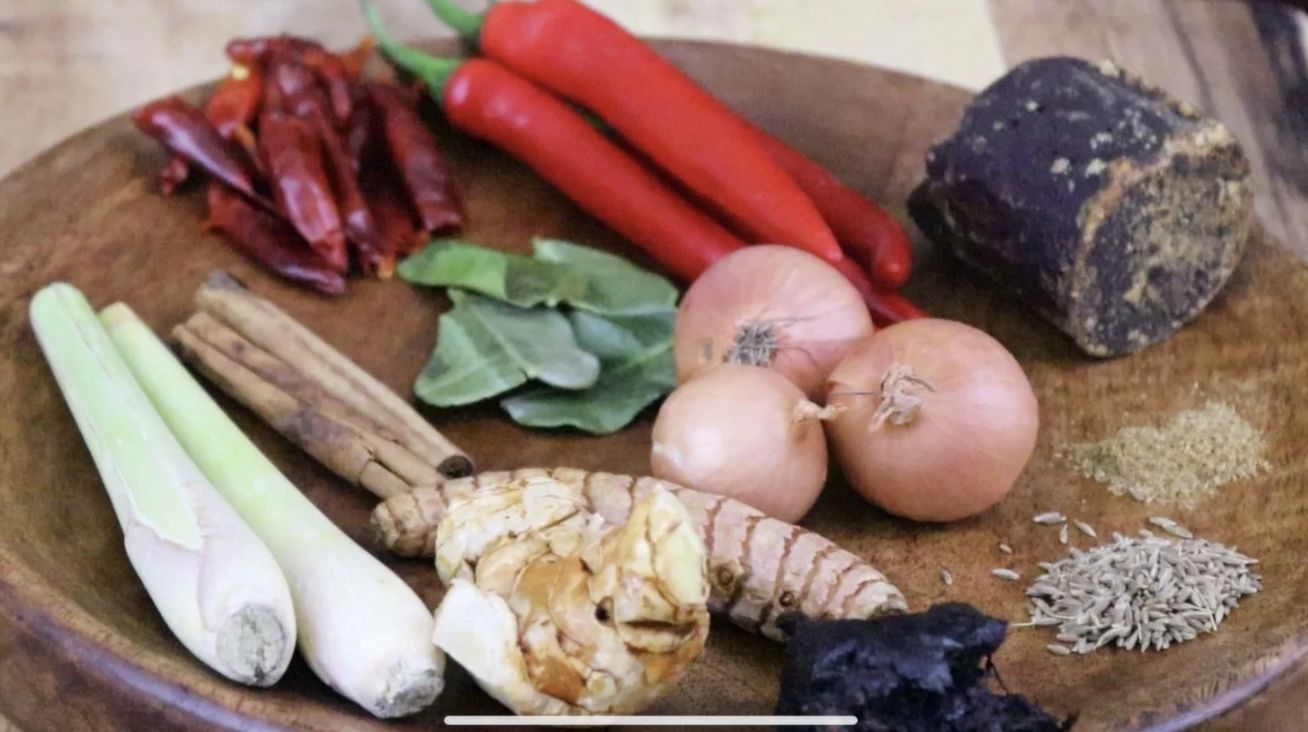
- Let’s begin by making up the rendang curry paste, ideally to extract all of the essential oils within the aromatics its best to use a mortar and pestle, however, feel free to use a food processor to save time and to add a little oil to mimic the aromatic oils from pounding. Start by roughly slicing 3 shallots, 3 long red chillies, 8-10 hydrated red chillies, 10g galangal or ginger and 5g of fresh turmeric. When sliced add to a mortar and pestle along with 2 tsp of cumin and 1 tsp of ground coriander. Begin to pound the aromats until a paste is formed. This usually take approximately 10-15 minutes to form a rough paste (the paste doesn’t have to be super fine). When ready place the curry paste to one side.
Lamb:
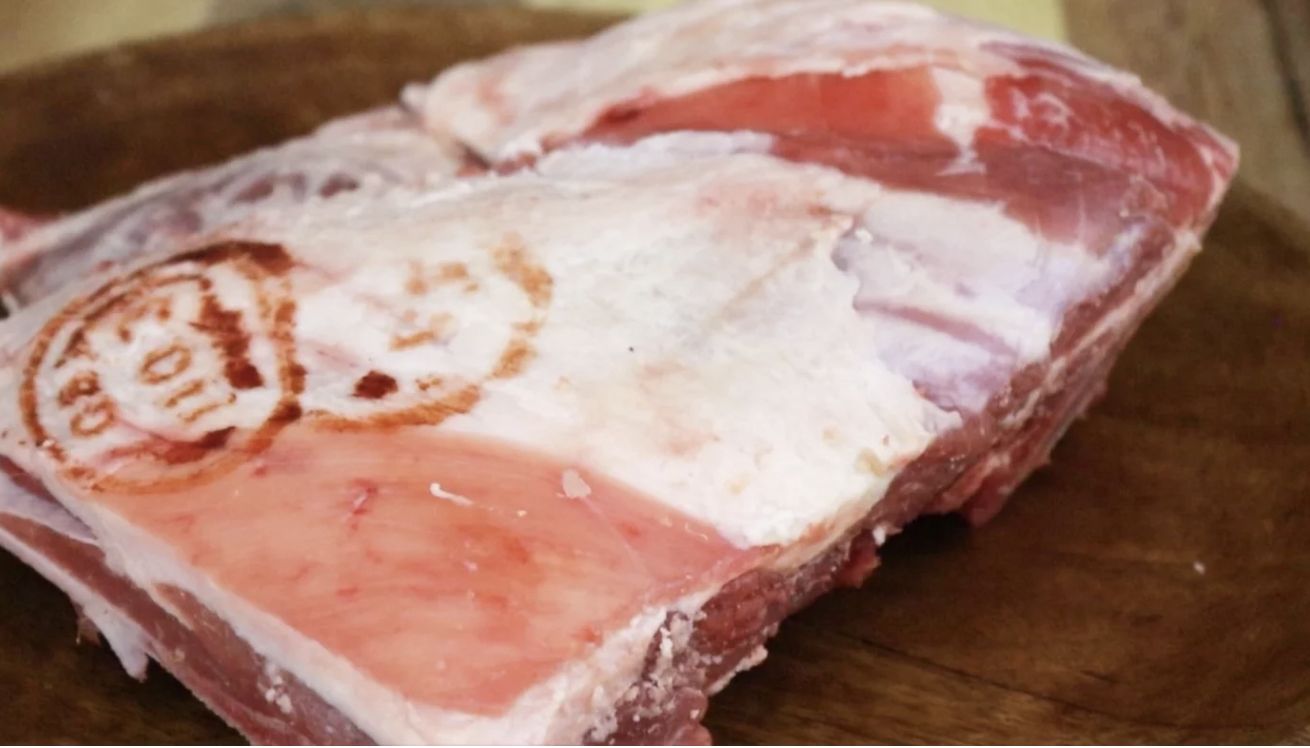
2. Now that we have our curry paste its time to move onto the lamb. For this recipe I used a deboned lamb shoulder, however, lamb neck or lamb leg would work also. Slice the lamb into relatively large bite sized pieces removing off any excess fat. We want to keep the lamb fairly large in size as the lamb will have a slow cook and the size of the lamb will shrink during the cooking process. When the lamb is sliced place onto a tray then briefly marinade by adding 1/4 of the curry paste made previously. Mix well and allow to marinade until ready to cook.
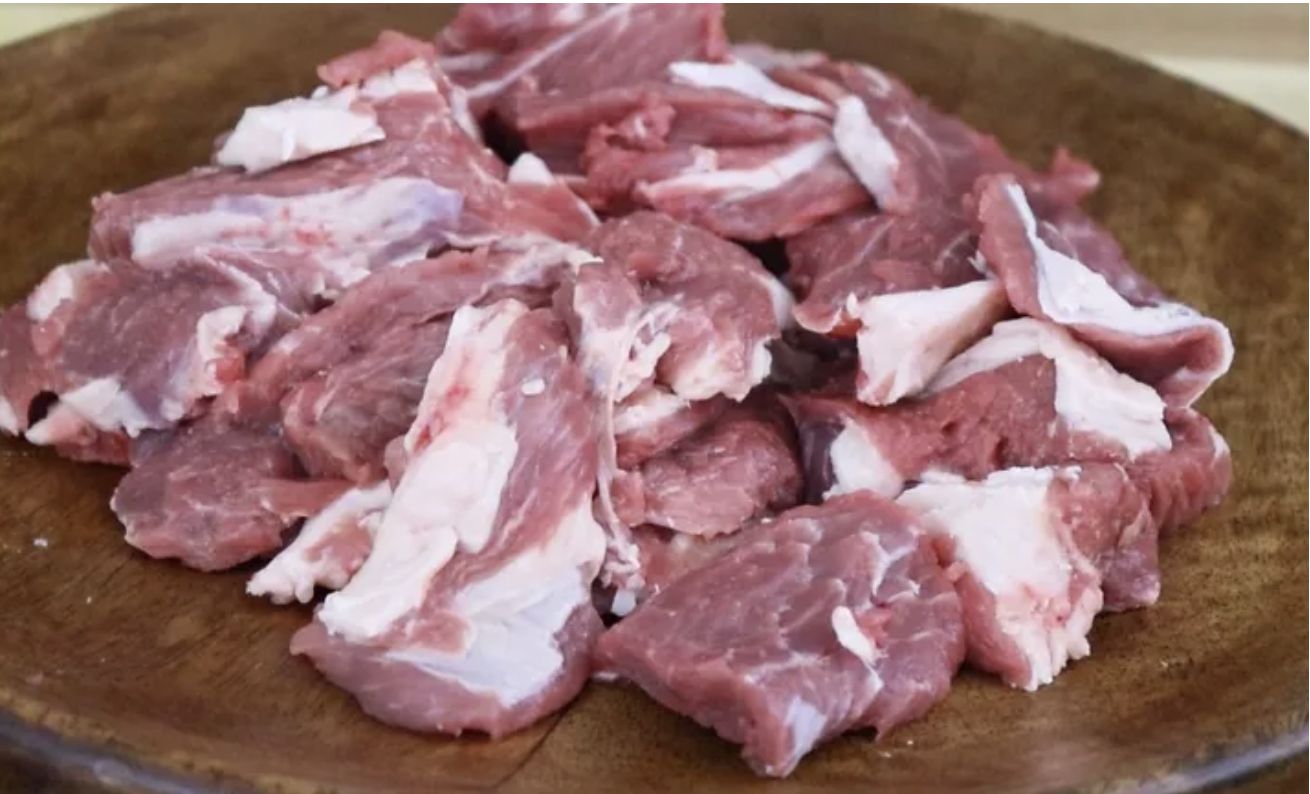
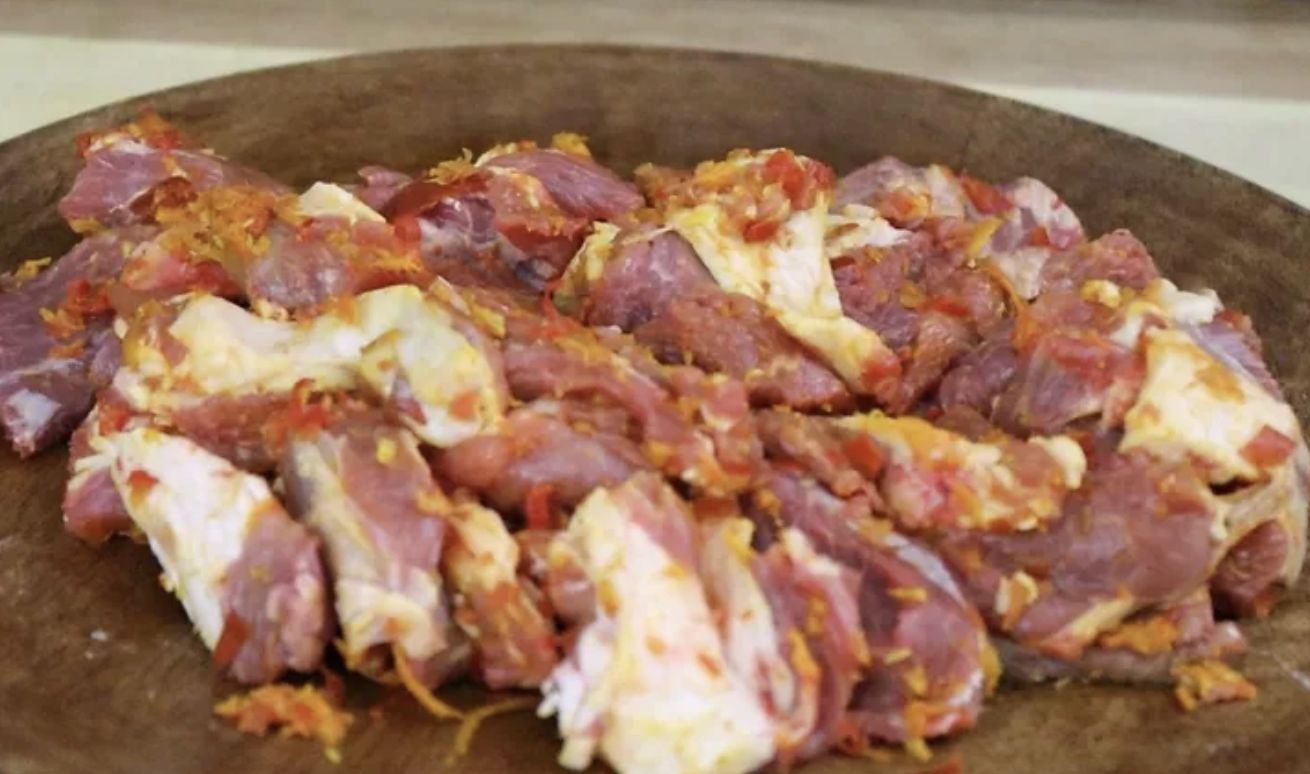
3. Just before we begin to cook the curry we need to prepare a few key components that will make the rendang. Add 20g of desiccated coconut to a dry pan and toast on a medium heat until golden. Next shave 2 tbsps worth of palm sugar and to make a tamarind stock add 10g of tamarind pulp to hot water and dilute.
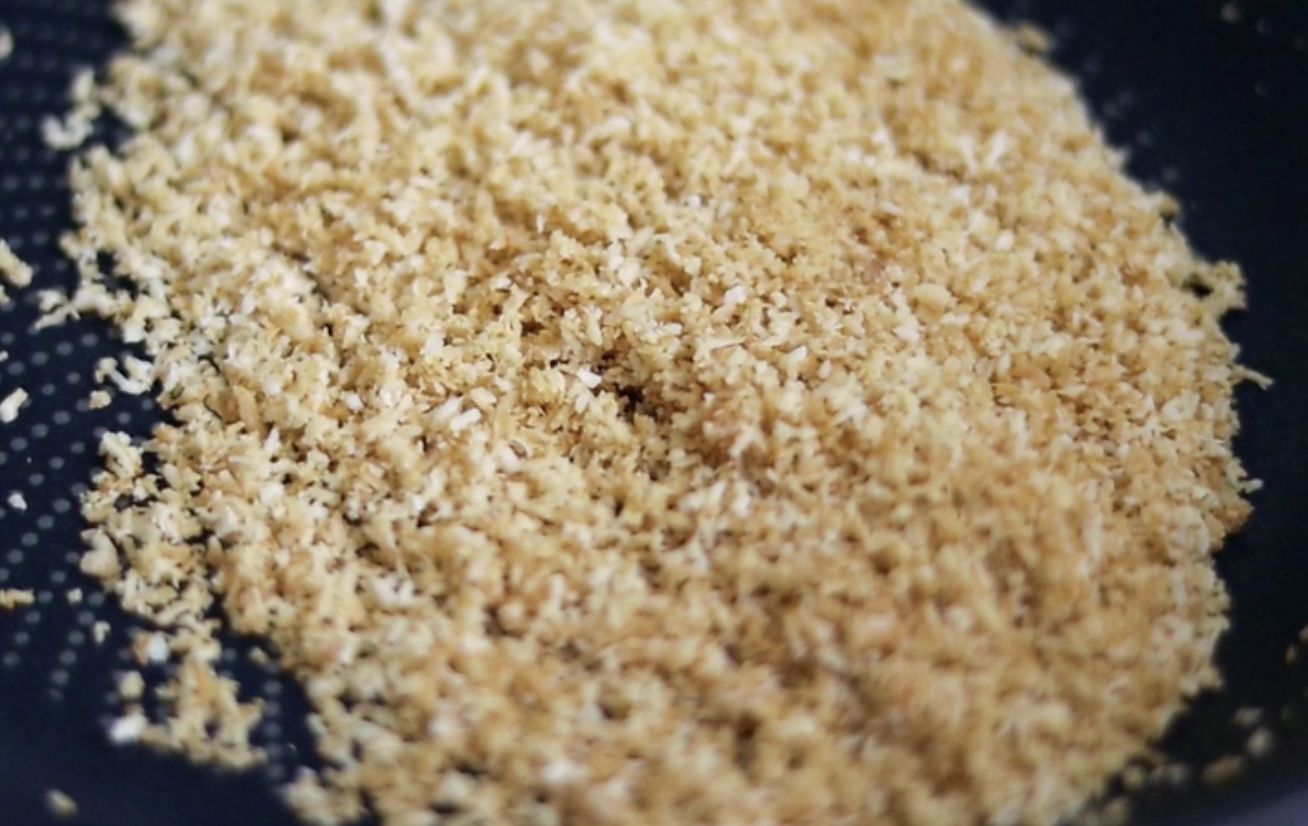
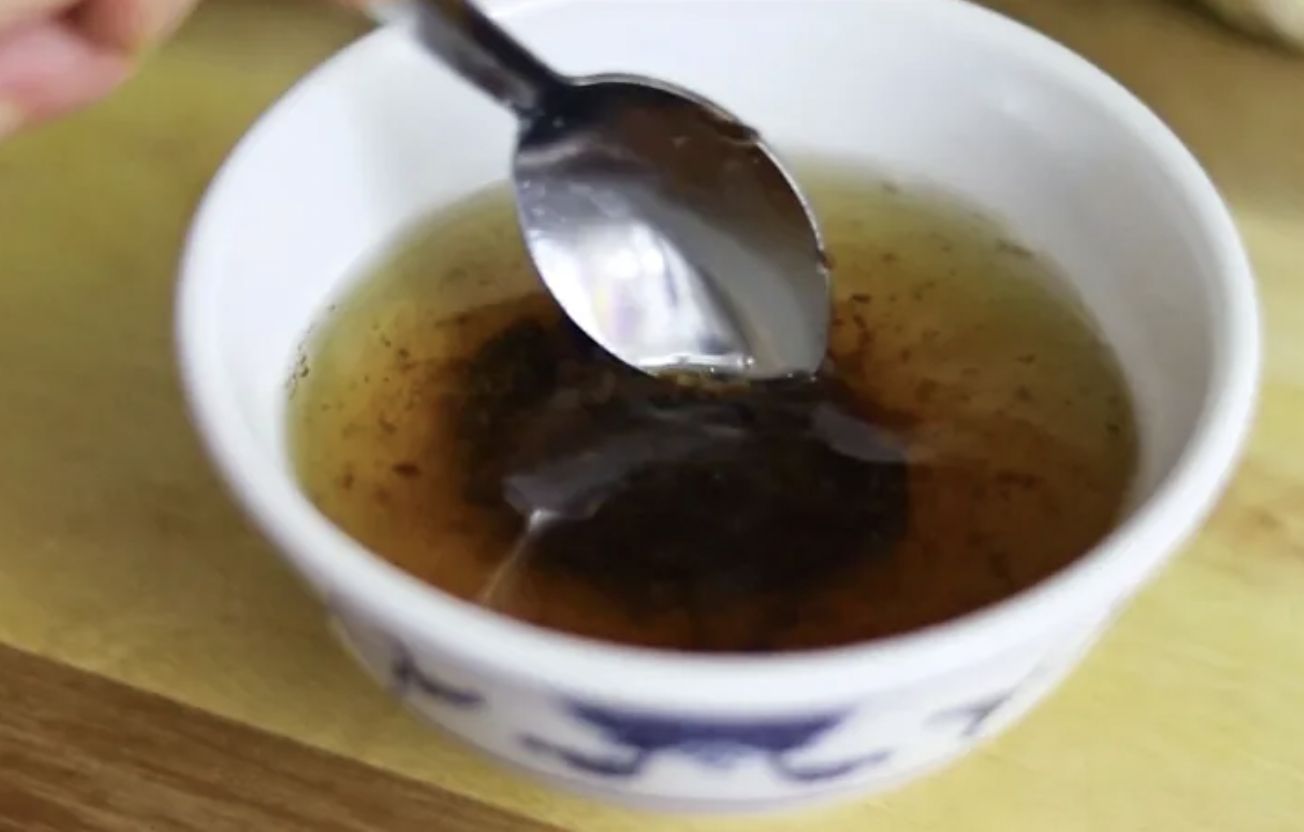
4. Now to cook the rendang, what really makes a good rendang is a slow cook with lots of love as we want to slowly extract all of those natural oils and flavours into the curry. Place a large deep pan onto a medium heat then add approximately 3 heaped tbsps of the curry paste made earlier. Stir-fry the curry paste for 8-10 minutes until fragrant.
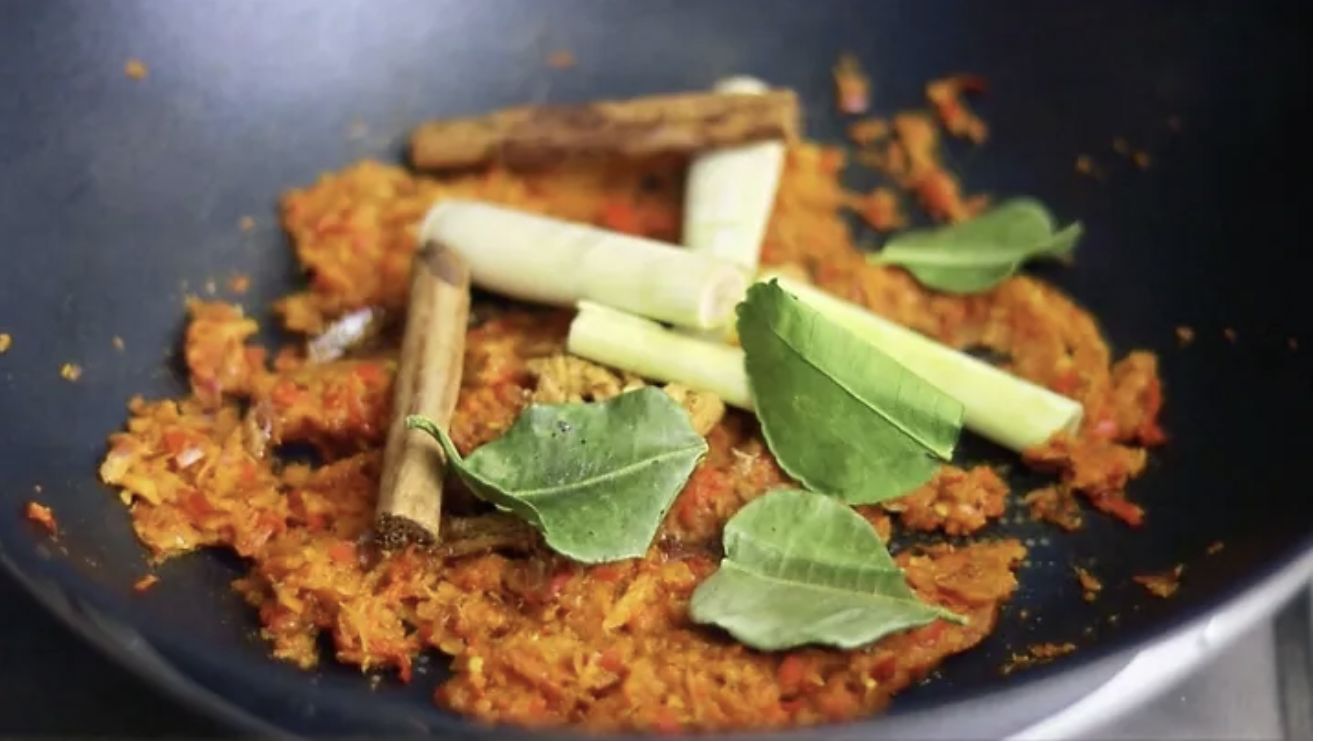
6. Now add all of the marinated sliced lamb to the curry paste and mix well to coat the lamb in the curry paste. When coated add 20g of the toasted desiccated coconut, and all of the tamarind stock made earlier and bring the liquid up to a boil.
8. After 1 hr 30 mins of slowing simmering the curry at this point it should have significantly reduced, become darker in colour and also just started to split. Turn the heat up slightly onto a medium to low heat then continue to cook out the curry for a further 30 minutes. As rendang is a dry curry we are literally looking for all of the liquid to completely reduce and for all of the oils to caramelise.
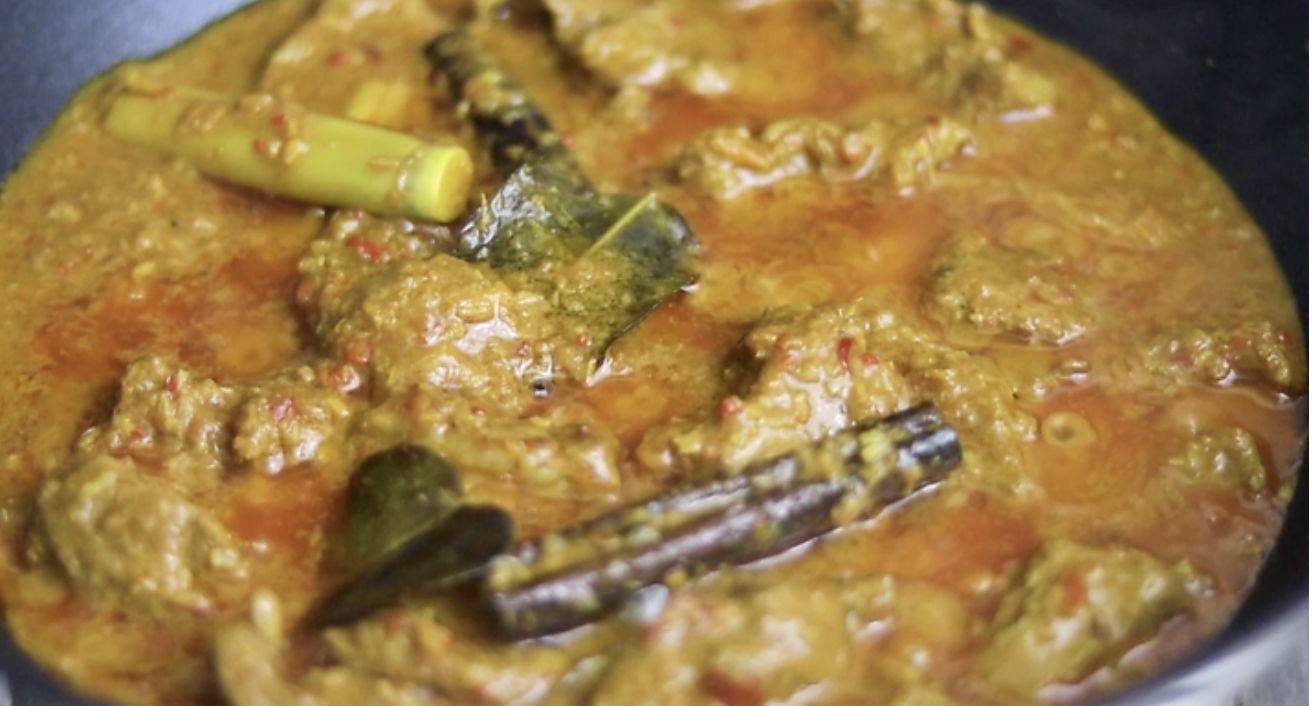
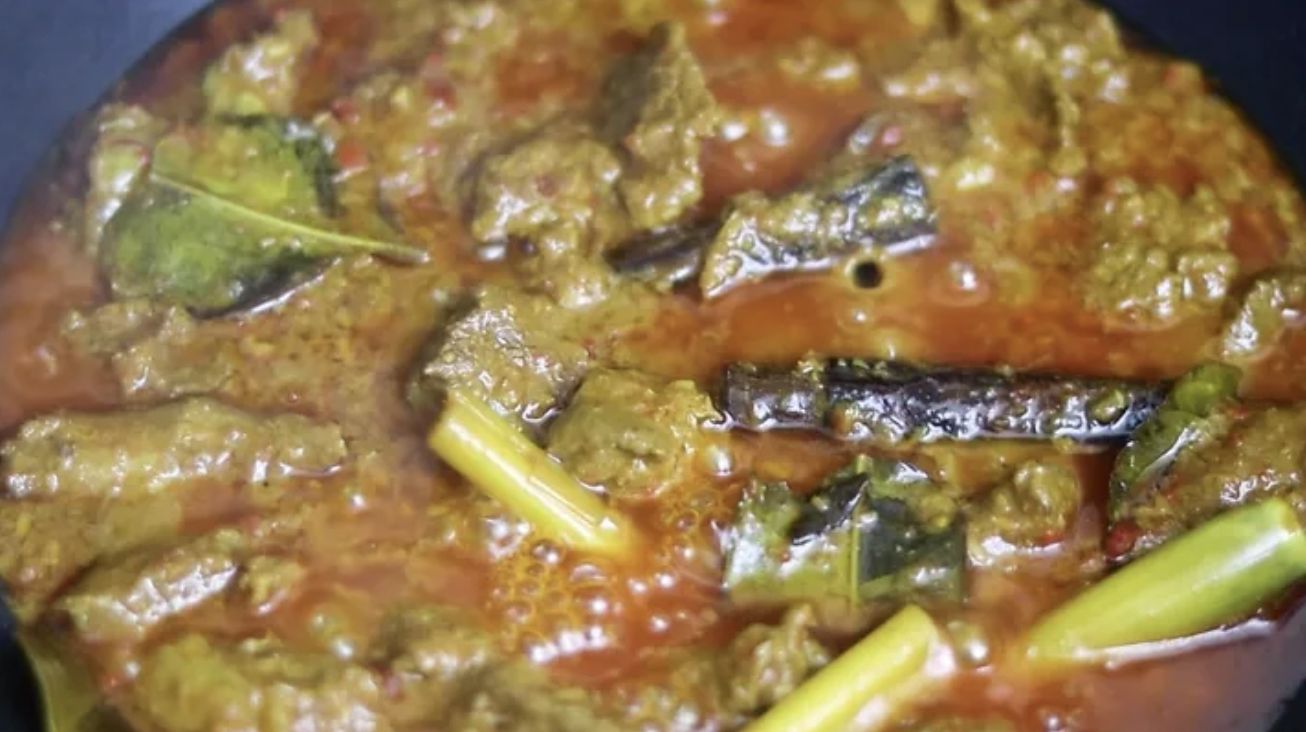
9. At around the 2 hour mark of cooking the curry should have just about completely reduced and all of the natural oils from the spices and coconut milk should more present. It is at this point where you would think that the rendang is ready, however, we want to take the curry further by completely caramelising the sugars within the curry to give the rendang its unique dry, dark and caramelised flavour. Continue to cook and stir the curry at this point for a further 10-20 minutes until the rendang is caramelised and lamb is tightly coated in the curry. Take care when cooking at this stage as the curry can go past caramelising and burn, therefore, try to keep a constant watch over it. When ready the lamb should be super soft and all that’s left is to adjust the seasoning if needed by adding additional salt then when ready we are ready to serve!
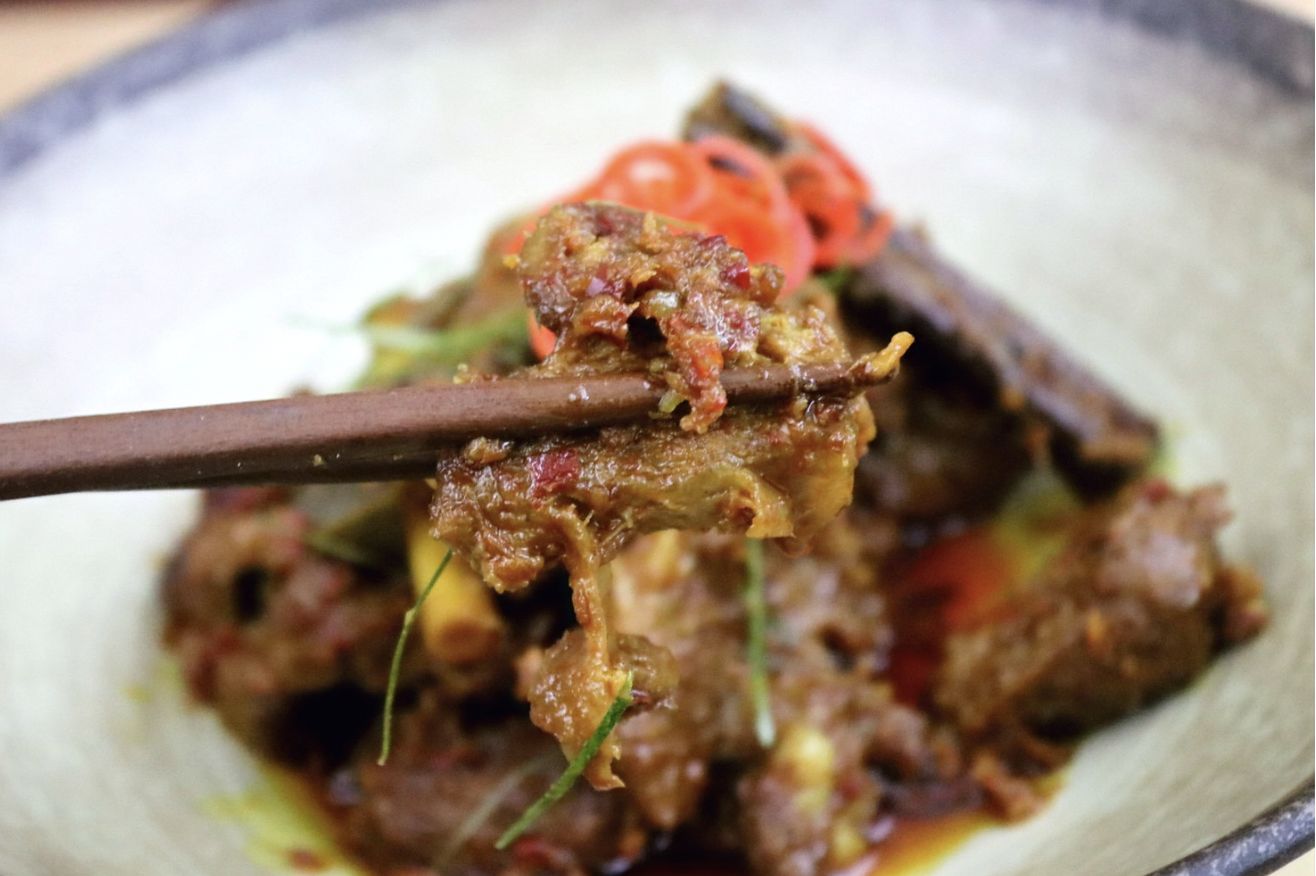
Additional notes
Instead of lamb then you could alternatively use beef or even chicken instead. The most classic form of rendang is usually made from brisket and if using chicken then a hen would work best due to the longer cooking time. Optionally if you want to make this curry less spicy then remove the seeds from the chillies or simply add less…I am sure that you will love this version of rendang and peace as always!!!

